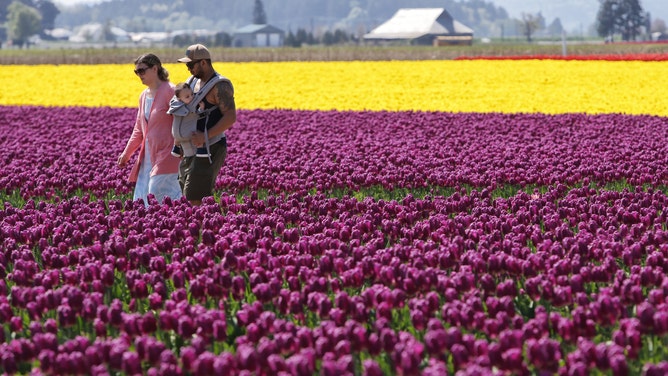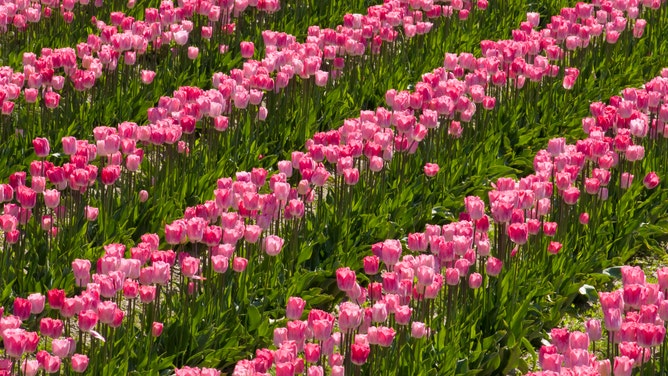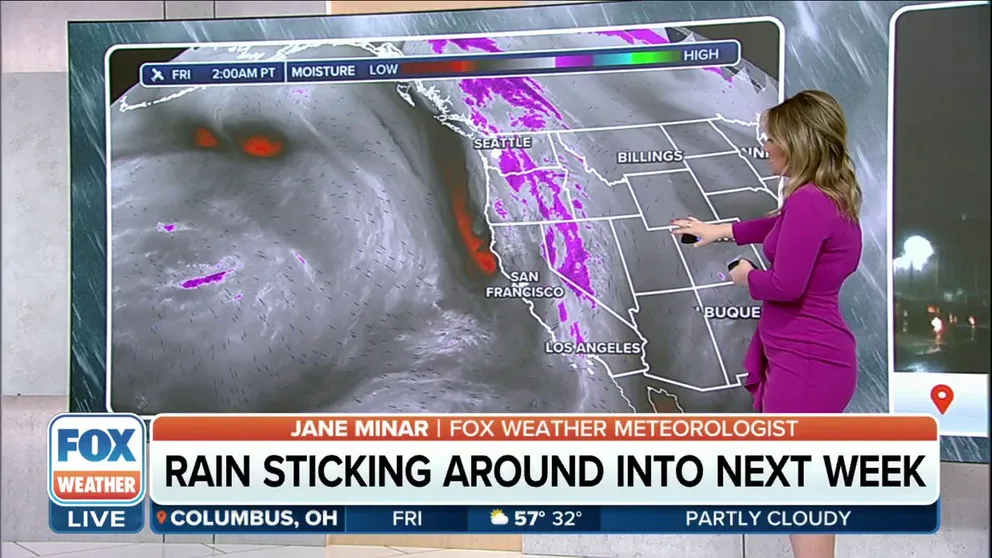Tulips in Washington state may bloom later this year – here’s why
The Evergreen State is one of the top tulip producers in the country, largely due to the region’s mild weather creating a good growing climate for the flowers.
Heavy rain, chilly temperatures hitting Pacific Northwest
A series of storms will continue to batter the Pacific Northwest this weekend into early next week.
The state of Washington had a relatively dry winter, but experts say the temperatures may hold the key as to why its famed tulips may be a little late to reach peak bloom this year.
The Evergreen State is one of the top tulip producers in the country, largely due to the region’s mild weather creating a good growing climate for the flowers.
"The amount of color and brilliance and just sheer beauty of the tulip bloom is really incredible," said Brent Roozen, a tulip grower in northwestern Washington’s Skagit Valley.
The area is home to what tourism officials said is the world’s largest tulip festival, the Skagit Valley Tulip Festival.

Colorful flowers paint the landscape of the annual Skagit Valley Tulip Festival on Wednesday, April 25, 2017.
(GENNA MARTIN / San Francisco Chronicle / FOX Weather)
"Our festival is a celebration of spring," said Cindy Verge, executive director of the Skagit Valley Tulip Festival. "It's built around the hundreds of acres of tulips that are grown here in this Skagit Valley."
The festival occurs every spring, throughout the month of April, which is when the tulips typically reach their peak bloom.
HOW WEATHER CAN AFFECT DC'S CHERRY BLOSSOMS
This year, however, peak bloom for the tulips may be a little delayed.
According to Roozen, whose farm grows about 98% of the tulips in Skagit Valley, temperatures are still dropping to the high 20s and low 30s, which have slowed down the flowers’ growth.
"The soil stays very cool, and the flowers still think it's earlier in the season – they still think it's wintertime," he said.
Roozen noted that tulips generally like cooler temperatures, with temperatures in the 50s stimulating their growth. With the recent temperatures dropping around freezing, the tulips’ growth has been delayed.
In addition to the cooler spring temperatures, Roozen noted the flowers are also delayed because of the lack of warmth during the daytime.
Warm spring temperatures usually help cue the tulips to start pushing their buds up, but since the region has not experienced many warm days as of late, the tulips have fallen behind in their bloom cycle.
According to Roozen, the tulips are at least ten days behind where they would be on an average year, and the timing of their peak bloom will continue to be influenced by temperatures of the coming days.

Tulips at Roozengaarde tulip fields, Skagit Valley, Washington. April 2009.
(VWPics / Universal Images Group / Getty Images)
If the daytime temperatures remain in the high 40s or low 50s and nighttime temperatures drop near freezing, Roozen said the tulips’ peak bloom may become even more delayed. On the flipside, he noted that should the weather change and the temperatures rise, the tulips' growth may be accelerated.
"There's a lot of variance in there, and we're at the mercy of Mother Nature," he said.
Weather patterns can also influence how long the blooms last. Roozen said a year with plenty of temperatures in the 70s, caused blooms to last only two weeks. Last year, however, a streak of 50-degree temperatures allowed the blooms to last five weeks.
7 most beautiful places to see flowers bloom in the U.S.
With the arrival of spring, fields across the United States come alive with color in stunning floral displays.




